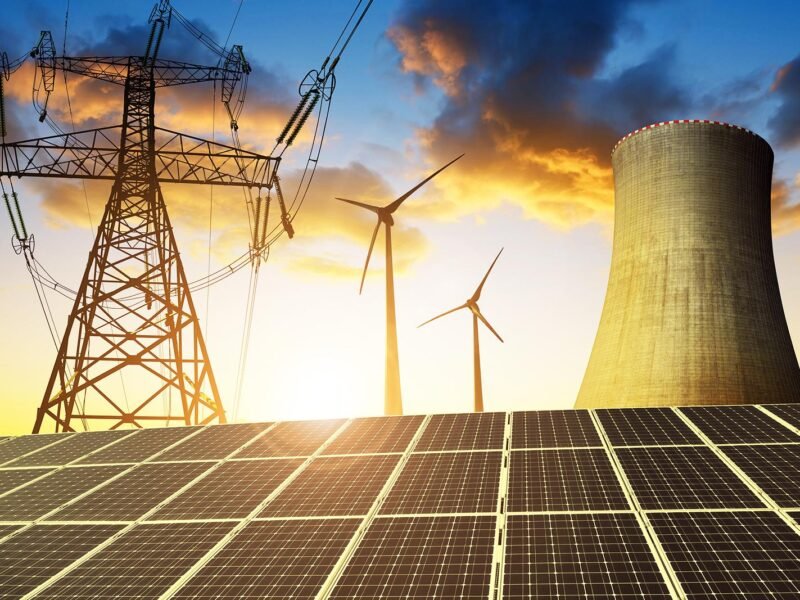Are we closer than ever to a sustainable future, or is it just wishful thinking? The reality is, breakthroughs in renewable energy technology are no longer a distant dream—they’re here, and they’re reshaping how we think about sustainability. With the growing urgency to combat climate change and reduce dependence on fossil fuels, innovations in renewable energy are providing solutions that are cleaner, more efficient, and more accessible.
This comprehensive article dives deep into the most transformative advancements in renewable energy technology, exploring how they are driving sustainability to new heights. If you’re passionate about the planet, intrigued by innovation, or simply curious about what’s next in energy, this guide is for you.
The Need for Renewable Energy Transformation
Have you ever wondered if our planet can sustain its growing population and energy demands? Fossil fuels, though historically reliable, are neither infinite nor sustainable. Their continued use contributes to greenhouse gas emissions, environmental degradation, and public health crises.
Renewable energy stands as the key to reversing these impacts. Sources like wind, solar, and bioenergy promise an abundant and clean alternative. However, achieving a global transition requires groundbreaking technologies to address challenges in efficiency, energy storage, and scalability. These innovations are meeting today’s energy needs while paving the way for a more sustainable future.
Solar Power: Revolutionizing Clean Energy
What if the sun could power the entire world? Recent advancements in solar technology bring us closer to this possibility. Modern solar panels convert sunlight into energy with unprecedented efficiency, thanks to innovations in photovoltaic cells.
Key Solar Innovations:
- Perovskite Solar Cells: These materials offer higher efficiency at lower production costs.
- Flexible Panels: Lightweight and adaptable, these panels can integrate into windows, clothing, and vehicles.
- Solar Farms: Massive installations harness the sun’s power on a large scale, providing energy to entire communities.
These advancements make solar energy more accessible and adaptable, enabling its use in both urban settings and remote areas.
Wind Energy: Harnessing Nature’s Power
Can we rely on the wind to power a sustainable future? Wind energy, a cornerstone of renewable energy, continues to evolve through technological advancements. Offshore wind farms, which benefit from stronger and more consistent winds, are leading the charge in renewable energy generation.
Innovations Driving Wind Energy:
- Vertical-Axis Turbines: These designs capture wind from all directions, improving efficiency.
- Bladeless Wind Systems: These systems reduce maintenance costs and environmental impact.
- Floating Wind Farms: Offshore installations that expand wind power’s reach.
These breakthroughs make wind power viable in diverse environments, from coastal regions to inland areas with moderate wind speeds.
Energy Storage: Solving Intermittency Challenges
Have you ever wondered why renewable energy isn’t more widespread if it’s so effective? The answer lies in energy storage. Solar and wind energy, while abundant, are intermittent sources. Advanced storage solutions are transforming how we store and use this energy.
Emerging Storage Technologies:
- Solid-State Batteries: Offering higher energy density and improved safety.
- Flow Batteries: Providing scalable storage for grid-level applications.
- Hydrogen Storage Systems: Converting excess energy into hydrogen for later use.
These innovations ensure renewable energy can power homes and industries 24/7, bridging the gap between production and demand.
Smart Grids: Modernizing Energy Distribution
Do you think our aging energy grid can handle the demands of renewable energy? Traditional grids, designed for centralized power generation, struggle to integrate diverse energy sources. Smart grids are changing this paradigm.
Features of Smart Grids:
- Two-Way Communication: Enables utilities and consumers to share energy data.
- Real-Time Monitoring: Optimizes energy flows and reduces waste.
- Integration with Renewables: Balances energy from solar, wind, and other sources.
Smart grids play a crucial role in transitioning to a cleaner, more efficient energy network.
Bioenergy: Turning Waste into Wealth
What if we could transform waste into a valuable energy source? Bioenergy does exactly that by converting organic materials—such as agricultural waste, food scraps, and algae—into biofuels and biogas.
Advancements in Bioenergy:
- Genetically Modified Algae: Produces higher yields of biofuels.
- Enhanced Fermentation Techniques: Creates cleaner and more efficient bioenergy.
- Waste-to-Energy Plants: Generate electricity from landfill waste.
Bioenergy offers a sustainable solution for industries like aviation and shipping, where electrification remains challenging.
Hydrogen Power: The Fuel of the Future
Could hydrogen become the clean energy solution we’ve been waiting for? Hydrogen, when used as fuel, produces zero emissions. Advances in hydrogen production through renewable-powered electrolysis make it a viable alternative to fossil fuels.
Applications of Hydrogen Power:
- Transportation: Hydrogen fuel cells power buses, trains, and trucks.
- Industrial Processes: Reduces emissions in sectors like steelmaking.
- Energy Storage: Acts as a medium for storing excess renewable energy.
As production costs decrease and infrastructure improves, hydrogen is poised to play a significant role in the global energy transition.
Geothermal Energy: Tapping Into Earth’s Heat
Have you considered the immense energy potential beneath our feet? Geothermal energy, which harnesses the Earth’s natural heat, provides a consistent and reliable power source.
Breakthroughs in Geothermal Technology:
- Enhanced Geothermal Systems: Extract heat from previously inaccessible areas.
- Advanced Drilling Techniques: Reduce costs and expand viability.
- Geothermal Heat Pumps: Provide efficient heating and cooling for buildings.
Geothermal energy offers a stable complement to intermittent sources like solar and wind.
The Role of Artificial Intelligence in Renewable Energy
Could AI optimize renewable energy systems for maximum efficiency? Artificial intelligence is revolutionizing how we manage and deploy renewable resources.
AI in Renewable Energy:
- Predictive Analytics: Forecast energy demand and optimize grid performance.
- Turbine Optimization: Improve wind energy output through real-time adjustments.
- Energy Efficiency: Reduce waste by analyzing consumption patterns.
Integrating AI into renewable energy systems accelerates the transition to sustainability.
Overcoming Barriers to Adoption
Why hasn’t renewable energy already taken over the world? Despite its benefits, several barriers slow its adoption.
Challenges Facing Renewable Energy:
- High Upfront Costs: Infrastructure and technology investments remain significant.
- Regulatory Hurdles: Policies can lag behind technological advancements.
- Public Resistance: Misconceptions about renewables create hesitation.
Governments, businesses, and communities must collaborate to address these challenges through incentives, subsidies, and education.
Real-World Testimonials: The Impact of Renewable Energy
Testimonial 1:
“Switching to solar panels reduced my energy bills by 70%. The new flexible panels even power my outdoor appliances.” – Laura, California
Testimonial 2:
“Our wind farm project uses AI to optimize output, and we’ve seen a 20% increase in efficiency. Renewables are the future of our business.” – Ahmed, UK
Testimonial 3:
“Integrating bioenergy into our manufacturing process cut emissions drastically and turned waste into a revenue stream.” – Priya, India
FAQs: Common Questions About Renewable Energy Technology
Q: What is the most promising renewable energy source?
A: Solar and wind lead the way due to their scalability and advancements, but hydrogen and geothermal are gaining ground.
Q: Can renewable energy fully replace fossil fuels?
A: With continued innovation and adoption, renewable energy has the potential to meet global energy demands sustainably.
Q: How can individuals support renewable energy?
A: Install solar panels, advocate for clean energy policies, and choose green energy plans from your utility provider.
Embracing a Sustainable Future
Breakthroughs in renewable energy technology are transforming sustainability from a lofty goal into a tangible reality. From solar and wind innovations to advanced storage systems and AI integration, these advancements pave the way for a cleaner, more efficient world.
What’s Next?
- Explore renewable energy solutions for your home or business.
- Support policies that encourage innovation and adoption.
- Stay informed about the latest breakthroughs shaping our future.
Are you ready to be part of this energy revolution? Visit our comprehensive guide to renewable energy solutions and discover how you can contribute to a sustainable future. Don’t just watch the world change—be the change.



